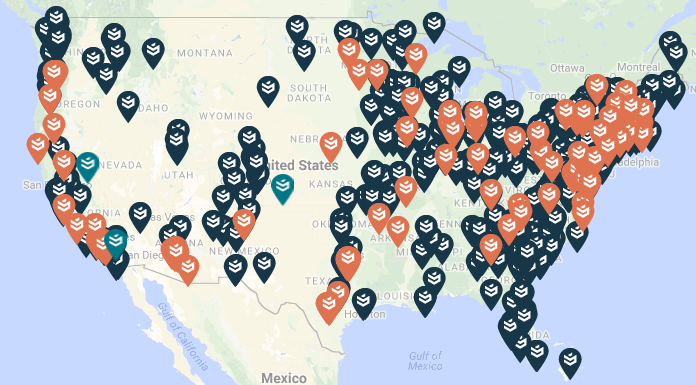The Benefits of DCKV
Kitchen ventilation, both exhaust and make up air, represent a significant opportunity for kWh and kBTU reductions in your facility. Demand Control Kitchen Ventilation, (DCKV) uses temperature and optic sensors to vary exhaust speed and make up air fans. This is in response to precise cooking intensity underneath all kitchen hoods. With fans only running as needed, savings are gained on fan energy (controls produce 40-60% average fan speed versus 100% without controls). In addition, there are heating and cooling savings gained as a result of kitchens not evacuating all air that was just conditioned.
These controls can be installed in new construction projects. They’re usually specified by engineering firms in the design phase of your project, and should qualify for one LEED point. In addition, DCKV is a path to compliance for commercial buildings’ energy codes for states that have adopted ASHRAE 90.1 2010 and greater. You can see what your state’s requirements are here.
Retrofitting
Retrofitting the temperature and optic controls within existing kitchen exhaust hoods is equally effective at generating energy savings. It’s important to confirm that the controls are UL 710 and 2017 listed. This permits them to be installed in any manufacturer’s hood in any cooking application. There are many utility rebate incentive programs available for the installation of DCKV as well.
Kitchen Ventilation in Action
The financial impact for hospitals’ operating costs is significant when kitchen exhaust and makeup air fans no longer run at full speed 24/7. A study by the EPA demonstrated that each dollar saved by a non-profit hospital, is the same as generating $20 in new revenues. Incidentally that same dollar saved in a for-profit facility is like increasing EPS by one penny.
Melink recently completed a Mid-West hospital project that produced $20,000 (per year) in combined savings. The savings included electrical, heating and cooling costs. Using EPA study metrics, this equivalates to $400,000 in new revenue for this facility. Taking rebate incentives for our technology, the hospital’s ROI was less than one year.
The Purpose of DCKV
The goal of any DCKV project is to install controls that maximize the energy savings within the kitchen. In addition, DCKV will assist compliance with building energy codes, attain LEED points and make kitchens quieter and more comfortable. This article goes into greater detail and dives deeper into how these controls pay back initial investment. The articles recently appeared in the American Society for Healthcare Engineering publication, Inside ASHE.


